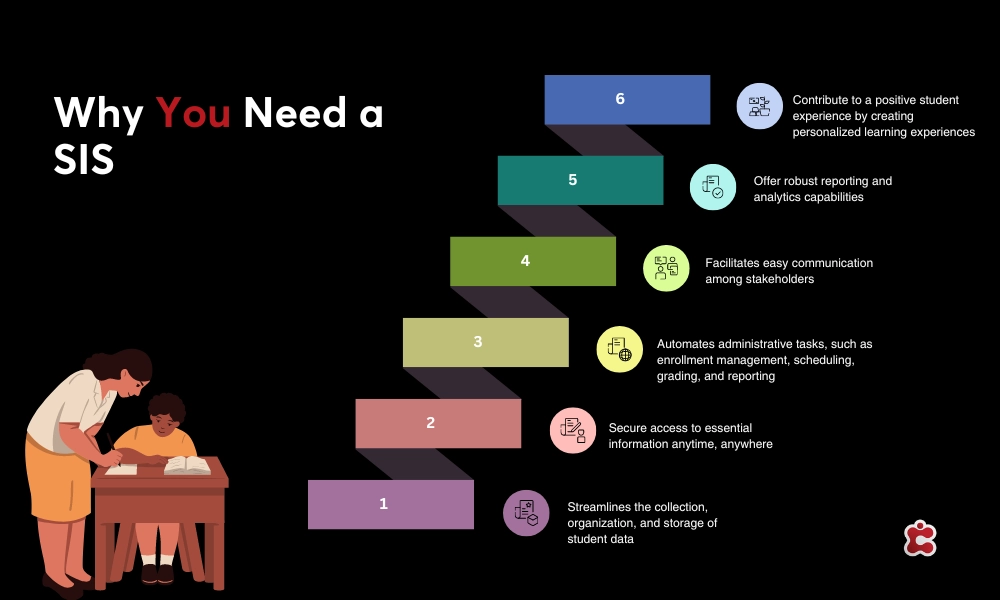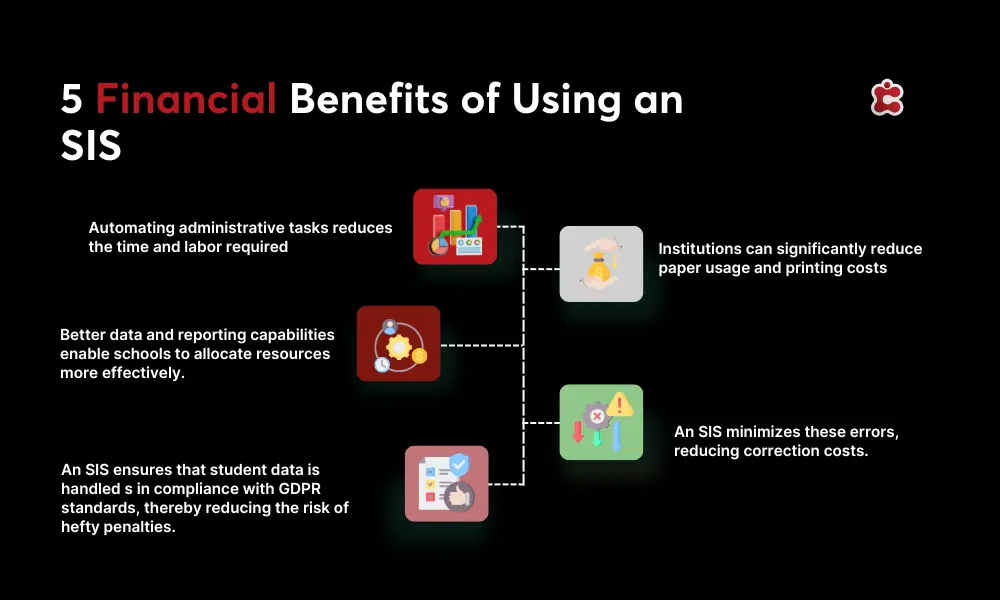When any institution decides to implement new software, the first question on everyone’s mind is usually, “How much will this cost?” It’s a valid concern. Every organization wants systems that boost efficiency and improve outcomes without breaking the bank. In the world of education, one such crucial system is Student Information Systems, or SIS.
Think of an SIS as an all-in-one platform designed to handle a wide range of student data and administrative tasks. Its core features include managing student enrollment, tracking attendance, handling grades, and organizing schedules. Plus, most SIS platforms offer tools for easy communication between students, parents, and teachers, along with powerful reporting and analytics capabilities. Essentially, an SIS aims to smooth administrative processes, ensure data accuracy, and support decision-making with up-to-date information.
But exactly how much do these systems cost? While we can’t give you exact figures, we can help break down the typical expenses involved. These include initial implementation costs, ongoing operational expenses, and potential indirect costs. On the flip side, we’ll also look at the financial benefits.
Let’s dive in.

Financial Costs an SIS
We’ll begin by examining the financial costs of implementing a Student Information System. Understanding these costs is crucial for educational institutions to make informed decisions and plan their budgets effectively. We’ll break down the financial costs into three main categories: initial implementation, operational, and indirect costs.
1. Initial Implementation Costs
Software Purchase or Licensing Fees
The first significant expense is the software purchase or licensing fees. Institutions have to choose between buying the software outright or opting for a subscription-based model. Upfront costs for purchasing an SIS can be substantial, depending on the complexity and capabilities of the system. Subscription models, while spreading costs over time, still represent a recurring financial commitment. Institutions must carefully evaluate their budget and long-term financial strategy to decide which option suits them best.
Hardware Upgrades
Implementing an SIS often requires upgrading existing hardware or purchasing new equipment to ensure compatibility. This includes servers, workstations, and networking infrastructure. These hardware upgrades are essential to support the new system’s demands and ensure smooth operation. Although these costs can be high initially, they are critical for the successful deployment and functionality of the SIS.
Customization and Integration
No two educational institutions are exactly alike, so customization is often necessary to tailor the SIS to specific needs. This includes configuring workflows, designing custom reports, and integrating the SIS with other existing systems. This could be learning management systems (LMS) or human resources software. These customization and integration efforts incur additional costs but are essential for ensuring the system meets the institution’s unique requirements.
2. Operational Costs
Training and Development
Training is a crucial aspect of SIS implementation. Staff and administrators need to be proficient in using the new system to maximize its benefits. The costs associated with training include hiring trainers, developing training materials, and possibly even dedicating time for staff to attend training sessions. Continuous development opportunities might also be necessary to keep up with system updates and new features.
Maintenance and Support
Once the SIS is up and running, ongoing maintenance and support are necessary to ensure it operates smoothly. This includes regular system updates, technical support services, and potential troubleshooting. Subscription-based models often include these services in their packages but still represent a recurring operational expense. Ensuring reliable maintenance and support minimizes disruptions and keeps the system functioning efficiently.
Data Migration
Migrating data from legacy systems to the new SIS can be complex and costly. This process involves extracting, cleaning, and importing data, often requiring professional services to ensure accuracy and integrity. Proper data migration is crucial for maintaining continuity and ensuring that historical data is preserved and accessible within the new system. While these costs are sometimes overlooked, they are an essential part of the transition process.
3. Indirect Costs
Potential Loss of Productivity During Transition
Implementing a new SIS can temporarily disrupt normal operations, leading to a potential loss of productivity. Staff may need time to adjust to the new system, and there might be a learning curve that affects efficiency. Planning for this transition period and setting realistic expectations are important to mitigate the impact on productivity.
Costs Associated with System Downtime During Implementation
During the implementation phase, there may be periods when the system is not fully operational. This downtime can affect various administrative and academic processes, leading to delays and additional costs. Contingency plans and careful scheduling can help minimize these disruptions, but institutions should be prepared for some level of downtime as part of the implementation process.

Financial Benefits
Now that we understand the financial costs that go into implementing a Student Information System, it’s time to look at the other side of the equation: the financial benefits. Investing in an SIS can yield significant returns by enhancing operational efficiency, reducing costs, and even generating additional revenue.
- Operational Efficiency: Automating administrative tasks such as attendance tracking, grading, and scheduling reduces the time and labor required. For example, a school might save hundreds of staff hours per year, translating into substantial labor cost savings. If administrative staff salaries average €20 per hour, saving 500 hours annually can result in a €10,000 reduction in labor costs.
- Cost Savings on Paper and Printing: By digitizing records and processes, institutions can significantly reduce paper usage and printing costs. For instance, in the USA alone, schools spend $1.6 billion on paper a year. An SIS can significantly reduce these costs
- Improved Resource Allocation: Better data and reporting capabilities enable schools to allocate resources more effectively. Accurate enrollment projections and resource tracking can prevent overstaffing or underutilization of resources, potentially saving tens of thousands of dollars annually.
- Reduced Errors and Associated Costs: Manual data entry errors can be costly to correct, often involving staff time and potential compliance issues. An SIS minimizes these errors, reducing correction costs. If error correction costs amount to $50 per incident and the SIS prevents 200 errors annually, the savings can reach $10,000.
- Reduced GDPR Penalties: Compliance with the EU General Data Protection Regulation (GDPR) is crucial for institutions that process the personal data of EU citizens. An SIS helps ensure that student data is handled securely and in compliance with GDPR standards, thereby reducing the risk of hefty penalties. Failure to comply with GDPR can result in fines of up to €20 million or 4% of the institution’s total annual worldwide turnover. By using an SIS to manage data securely and compliantly, schools can avoid these significant financial penalties.
Classter’s SIS for Financial Success
Classter is a go-to solution for educational institutions looking to optimize their financial performance through an advanced Student Information System (SIS). By streamlining processes and enhancing data management, Classter’s SIS offers numerous financial benefits that can transform the way schools operate.
How Classter’s SIS Can Help Institutions Financially:
1. Classter automates routine administrative tasks such as enrollment, scheduling, and grade reporting. This automation significantly reduces the time staff spend on these tasks, allowing them to focus on more strategic activities.
2. With Classter’s digital platform, institutions can drastically cut down on paper usage and printing expenses. By moving to digital records and communications, schools can save thousands of dollars annually, contributing to both financial savings and environmental sustainability.
3. Classter ensures compliance with educational standards and regulations, reducing the risk of costly fines and penalties.
4. With detailed analytics and reporting capabilities, Classter empowers institutions to make informed decisions. This data-driven approach can identify areas for cost savings, improve academic outcomes, and support strategic planning, leading to financial efficiencies and improved budget management.
Want to see how Classter can transform your institution’s financial health? Book a demo today and discover the full range of benefits that our SIS can offer.
FAQ’s
The cost of an SIS can vary widely depending on factors such as the size of the institution, the complexity of the system, and the chosen pricing model (subscription vs. one-time purchase). Look at the initial implementation costs, ongoing operational costs, and indirect costs.
Financial benefits include increased operational efficiency, reduced costs for paper and printing, improved resource allocation, reduced errors and associated costs, increased revenue through improved student retention, and reduced GDPR penalties due to better compliance.
Key features include student enrollment management, attendance tracking, grade reporting, academic scheduling, communication tools for students, parents, and teachers, and robust reporting and analytics capabilities.

